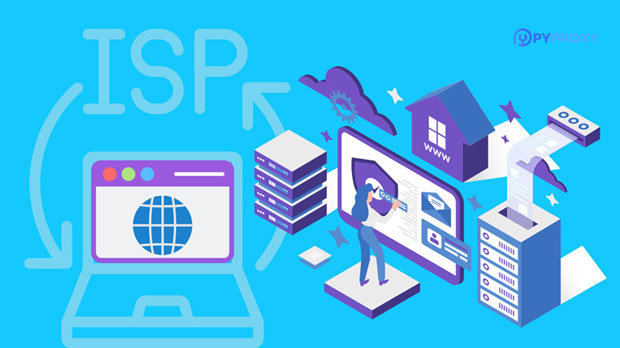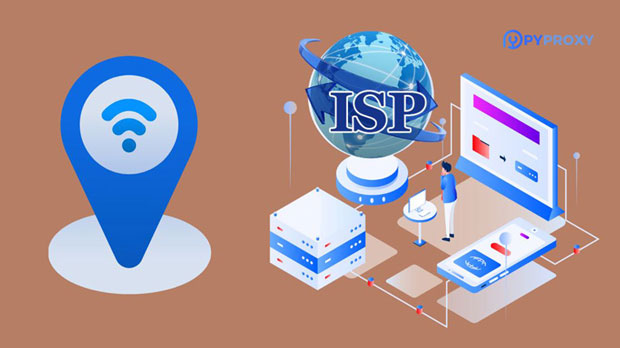How does the IP Residential Proxy protect me when using public Wi-Fi?
Public Wi-Fi networks, though convenient, often pose significant security risks to users. Cybercriminals can easily intercept data transmitted over these networks, putting personal information such as login credentials, financial data, and browsing activity at risk. However, using a residential ip proxy can provide an added layer of security, safeguarding sensitive information while browsing on public Wi-Fi. A residential ip proxy works by routing internet traffic through a private server, masking the user's actual IP address and encrypting the communication between the user and the website. This article will delve into the specific ways residential ip proxies enhance security when using public Wi-Fi, explaining how they mitigate threats like data interception, identity theft, and other cyberattacks. Understanding the Risks of Public Wi-FiBefore examining how residential IP proxies work, it's essential to understand the risks associated with public Wi-Fi. These networks are typically unsecured, meaning they lack proper encryption and protection. When you connect to a public Wi-Fi hotspot, your device communicates directly with the network without any protective layers like VPN encryption. This creates a perfect opportunity for malicious actors, often referred to as "man-in-the-middle" attackers, to intercept the data flow between your device and the network.Common risks on public Wi-Fi include:1. Data Interception: Hackers can capture sensitive data, such as login credentials, credit card numbers, and personal communications. Since there is little to no encryption, any information transmitted is exposed. 2. Session Hijacking: Attackers can take control of your active online sessions, like email or banking accounts, once they intercept your session cookies or authentication tokens.3. Malware Distribution: Cybercriminals may set up fake Wi-Fi hotspots to infect devices with malware. These malicious networks may look legitimate but are designed to trick users into connecting, allowing attackers to install harmful software on their devices.4. Identity Theft: Without proper security measures, attackers can easily gain access to your personal details, potentially using them for fraud or theft.Given these risks, it becomes clear why securing your online activities while using public Wi-Fi is crucial. This is where residential IP proxies come into play.How Residential IP Proxies Enhance Security on Public Wi-FiResidential IP proxies are distinct from regular VPNs and data center proxies because they use real IP addresses assigned by Internet Service Providers (ISPs) to regular household devices. This allows for more secure, anonymous browsing, especially in public environments. When you connect to the internet using a residential IP proxy, the data you send is routed through an intermediary server located in a residential network. This process provides several security benefits.1. Encryption of Internet Traffic Residential IP proxies encrypt the data transmitted between your device and the proxy server. This encryption ensures that even if an attacker intercepts the data on the public Wi-Fi network, they will not be able to read or use it. The encrypted tunnel protects sensitive information, such as passwords and credit card details, from being exposed to malicious actors.2. Masking Your IP Address By masking your actual IP address with one from the proxy server, residential IP proxies make it significantly harder for hackers to track your online activities. This added anonymity is particularly useful on public networks, where tracking and spying are common. Without knowing your real IP address, cybercriminals have a much harder time pinpointing your location or targeting your device.3. Preventing Man-in-the-Middle Attacks One of the most dangerous threats on public Wi-Fi is the risk of man-in-the-middle attacks, where hackers intercept and manipulate the communication between you and a website. Residential IP proxies mitigate this risk by acting as intermediaries that manage the connection securely. Even if attackers manage to intercept data, they will not be able to decrypt it without the proper encryption keys.4. Secure Data Routing Unlike other proxies that use data center IPs, residential IP proxies route your internet traffic through real residential networks. This approach is far less likely to be flagged by websites or malicious parties since it mimics normal, legitimate traffic patterns. This reduces the chances of your data being exposed to surveillance or interception.5. Protection from Fake Wi-Fi Networks When using public Wi-Fi, attackers may create fake networks to lure unsuspecting users. A residential IP proxy can help avoid falling victim to this type of attack. Since the proxy server can detect and block suspicious or malicious websites, it adds another layer of protection by preventing connections to harmful networks.The Role of Encryption in Protecting Sensitive InformationEncryption is a key element in ensuring your safety when using public Wi-Fi. When a residential IP proxy is used, the encryption process protects all the data you send and receive from being exposed to hackers. This encryption is similar to what is used in secure websites (HTTPS), but it extends to all online activities, including emails, file transfers, and browsing. The encryption essentially transforms your data into a code that only the proxy server and the destination website can understand. Even if an attacker intercepts the data, they will see only a scrambled mess of information, making it useless to them. This level of protection is especially important when using unsecured networks like public Wi-Fi, as it significantly reduces the likelihood of data theft.Protecting Your Privacy on Public NetworksPrivacy is another critical concern when using public Wi-Fi. Connecting to these networks often exposes personal information, such as your real IP address, device details, and browsing habits. Hackers can exploit this data for targeted attacks, identity theft, or unauthorized access to accounts.Residential IP proxies protect your privacy by masking your real IP address. When your traffic is routed through a proxy server, the websites you visit will only see the proxy's IP address, not yours. This ensures that your online activities remain anonymous and difficult to trace. Additionally, residential proxies can help avoid being tracked by third-party advertisers or malicious websites looking to exploit your data.Limitations and Considerations of Using Residential IP ProxiesWhile residential IP proxies offer substantial security benefits, they are not a cure-all for online threats. It’s essential to keep in mind that proxies alone cannot protect you from all types of cyberattacks. Users should also ensure that they:- Use Strong Passwords: Always employ strong, unique passwords for all online accounts to prevent unauthorized access.- Enable Two-Factor Authentication (2FA): 2FA adds an extra layer of security by requiring a second form of verification to access accounts, even if your password is compromised.- Be Cautious of Suspicious Links: Avoid clicking on unknown links or downloading files from untrusted sources, even when using a proxy.Additionally, while residential proxies can help you maintain anonymity and prevent data interception, they cannot prevent malware infections or phishing attacks that may occur when you visit malicious websites.Conclusion: The Importance of Using Residential IP Proxies on Public Wi-FiIn conclusion, residential IP proxies provide a vital layer of security and privacy when using public Wi-Fi. By encrypting your traffic, masking your IP address, and preventing man-in-the-middle attacks, they protect you from the many risks associated with unsecured networks. However, it is essential to combine the use of residential proxies with other security practices, such as strong passwords, two-factor authentication, and cautious internet behavior, to ensure comprehensive protection.Public Wi-Fi offers convenience but also exposes users to significant security risks. By using a residential IP proxy, you can safeguard your sensitive data, maintain privacy, and enjoy a safer online experience, even in the most vulnerable environments.
2025-01-31

























































